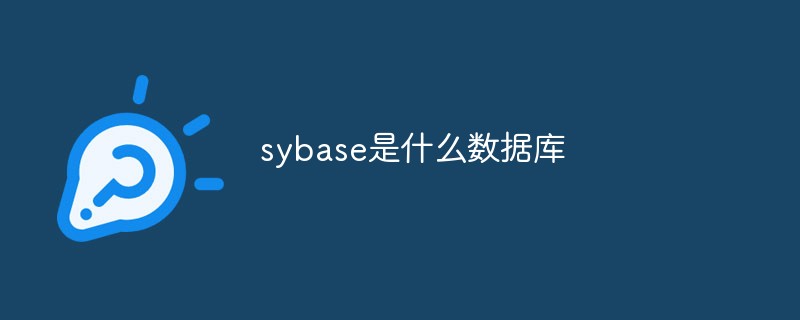
Java database search optimization technology analysis and application sharing
In recent years, with the advent of the Internet and big data era, the use of databases has become more widespread and frequent. Among many database operations, database search is the most common and important one. However, database search often faces problems of low efficiency and high resource consumption. In order to solve this problem, developers have proposed many optimization techniques to improve the efficiency and performance of database search through continuous exploration and practice. This article will focus on some Java database search optimization techniques and provide corresponding code examples.
1. Index optimization
Index is the key to database search. By setting up appropriate indexes, the speed of searches can be greatly improved. In Java, we can use database index creation, modification, deletion and other operations to optimize database search.
Sample code:
-
Create index:
CREATE INDEX index_name ON table_name (column_name);
-
Modify index:
ALTER INDEX index_name ON table_name REBUILD;
-
Delete index:
DROP INDEX index_name;
2. Cache optimization
Caching is a common way to improve search efficiency. In Java, caching technology can be used to reduce the number of accesses to the database. By storing commonly used query results in memory, users' search requests can be quickly responded to and the load on the database can be reduced.
Sample code:
import java.util.HashMap;
import java.util.Map;
public class Cache {
private static Map<String, Object> cacheMap = new HashMap<>();
public static Object get(String key) {
return cacheMap.get(key);
}
public static void put(String key, Object value) {
cacheMap.put(key, value);
}
public static void remove(String key) {
cacheMap.remove(key);
}
public static void clear() {
cacheMap.clear();
}
}3. Query optimization
In addition to index and cache optimization, search efficiency can also be improved by optimizing query statements. In Java, you can use the query optimization syntax of the database to optimize query statements, such as using subqueries, join queries, indexes, etc.
Sample code:
SELECT * FROM table1 WHERE column1 IN (SELECT column2 FROM table2 WHERE condition);
4. Paging optimization
For large databases, the search results may be very large. In order to improve search efficiency, we can use paging technology to load search results in batches.
Sample code:
SELECT * FROM table LIMIT offset, count;
5. Concurrency optimization
Multiple threads and database connection pools are commonly used concurrency optimization technologies. In Java, you can use thread pools and database connection pools to improve the concurrent processing capabilities of search.
Sample code:
import java.util.concurrent.ExecutorService;
import java.util.concurrent.Executors;
public class ThreadPool {
private static ExecutorService threadPool = Executors.newFixedThreadPool(10);
public static void execute(Runnable task) {
threadPool.execute(task);
}
} 6. Performance monitoring and tuning
For database search, performance monitoring and tuning are very important. By monitoring and tuning performance during the search process, potential performance issues can be discovered and resolved.
Java provides a series of performance monitoring and tuning tools, such as JConsole, VisualVM, etc. We can use these tools for performance analysis and optimization.
To sum up, Java database search optimization technology is the key to improving search efficiency and performance. Through the comprehensive application of index optimization, cache optimization, query optimization, paging optimization, concurrency optimization, and performance monitoring and tuning, the efficiency and performance of database search can be significantly improved. In practical applications, we should choose appropriate optimization technology according to specific needs and scenarios to achieve the best results.
The above is the detailed content of Java database search optimization technology analysis and application sharing. For more information, please follow other related articles on the PHP Chinese website!
 深入理解MySQL索引优化器工作原理Nov 09, 2022 pm 02:05 PM
深入理解MySQL索引优化器工作原理Nov 09, 2022 pm 02:05 PM本篇文章给大家带来了关于mysql的相关知识,其中主要介绍了关于索引优化器工作原理的相关内容,其中包括了MySQL Server的组成,MySQL优化器选择索引额原理以及SQL成本分析,最后通过 select 查询总结整个查询过程,下面一起来看一下,希望对大家有帮助。
 sybase是什么数据库Sep 22, 2021 am 11:39 AM
sybase是什么数据库Sep 22, 2021 am 11:39 AMsybase是基于客户/服务器体系结构的数据库,是一个开放的、高性能的、可编程的数据库,可使用事件驱动的触发器、多线索化等来提高性能。
 visual foxpro数据库文件是什么Jul 23, 2021 pm 04:53 PM
visual foxpro数据库文件是什么Jul 23, 2021 pm 04:53 PMvisual foxpro数据库文件是管理数据库对象的系统文件。在VFP中,用户数据是存放在“.DBF”表文件中;VFP的数据库文件(“.DBC”)中不存放用户数据,它只起将属于某一数据库的 数据库表与视图、连接、存储过程等关联起来的作用。
 数据库系统的构成包括哪些Jul 15, 2022 am 11:58 AM
数据库系统的构成包括哪些Jul 15, 2022 am 11:58 AM数据库系统由4个部分构成:1、数据库,是指长期存储在计算机内的,有组织,可共享的数据的集合;2、硬件,是指构成计算机系统的各种物理设备,包括存储所需的外部设备;3、软件,包括操作系统、数据库管理系统及应用程序;4、人员,包括系统分析员和数据库设计人员、应用程序员(负责编写使用数据库的应用程序)、最终用户(利用接口或查询语言访问数据库)、数据库管理员(负责数据库的总体信息控制)。
 microsoft sql server是什么软件Feb 28, 2023 pm 03:00 PM
microsoft sql server是什么软件Feb 28, 2023 pm 03:00 PMmicrosoft sql server是Microsoft公司推出的关系型数据库管理系统,是一个全面的数据库平台,使用集成的商业智能(BI)工具提供了企业级的数据管理,具有使用方便可伸缩性好与相关软件集成程度高等优点。SQL Server数据库引擎为关系型数据和结构化数据提供了更安全可靠的存储功能,使用户可以构建和管理用于业务的高可用和高性能的数据应用程序。
 数据库的什么是指数据的正确性和相容性Jul 04, 2022 pm 04:59 PM
数据库的什么是指数据的正确性和相容性Jul 04, 2022 pm 04:59 PM数据库的“完整性”是指数据的正确性和相容性。完整性是指数据库中数据在逻辑上的一致性、正确性、有效性和相容性。完整性对于数据库系统的重要性:1、数据库完整性约束能够防止合法用户使用数据库时向数据库中添加不合语义的数据;2、合理的数据库完整性设计,能够同时兼顾数据库的完整性和系统的效能;3、完善的数据库完整性有助于尽早发现应用软件的错误。
 access数据库的结构层次是什么Aug 26, 2022 pm 04:45 PM
access数据库的结构层次是什么Aug 26, 2022 pm 04:45 PM结构层次是“数据库→数据表→记录→字段”;字段构成记录,记录构成数据表,数据表构成了数据库。数据库是一个完整的数据的记录的整体,一个数据库包含0到N个表,一个表包含0到N个字段,记录是表中的行。
 go语言可以写数据库么Jan 06, 2023 am 10:35 AM
go语言可以写数据库么Jan 06, 2023 am 10:35 AMgo语言可以写数据库。Go语言和其他语言不同的地方是,Go官方没有提供数据库驱动,而是编写了开发数据库驱动的标准接口,开发者可以根据定义的接口来开发相应的数据库驱动;这样做的好处在于,只要是按照标准接口开发的代码,以后迁移数据库时,不需要做任何修改,极大方便了后期的架构调整。


Hot AI Tools

Undresser.AI Undress
AI-powered app for creating realistic nude photos

AI Clothes Remover
Online AI tool for removing clothes from photos.

Undress AI Tool
Undress images for free

Clothoff.io
AI clothes remover

AI Hentai Generator
Generate AI Hentai for free.

Hot Article

Hot Tools

Dreamweaver CS6
Visual web development tools

ZendStudio 13.5.1 Mac
Powerful PHP integrated development environment

Atom editor mac version download
The most popular open source editor

SublimeText3 Mac version
God-level code editing software (SublimeText3)

Safe Exam Browser
Safe Exam Browser is a secure browser environment for taking online exams securely. This software turns any computer into a secure workstation. It controls access to any utility and prevents students from using unauthorized resources.






